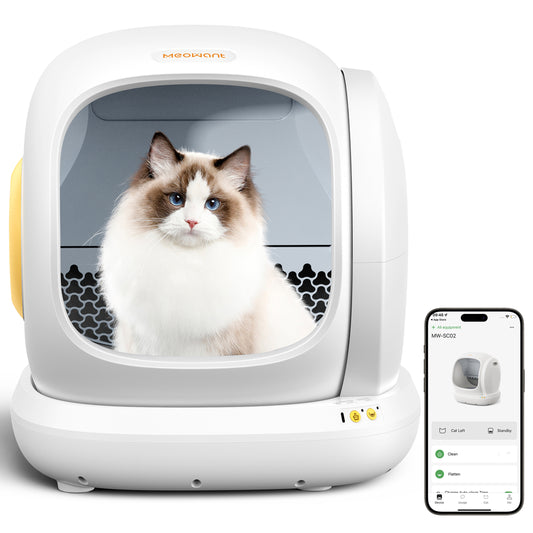The Ultimate Guide to Choosing Your Cat's Self-Cleaning Litter Box: What You Need to Know!
As a cat owner, one of the most challenging aspects of pet care is maintaining a clean litter box. Thankfully, the rise of automatic cat litter boxes has revolutionized the way we manage our feline friends' waste. These innovative devices not only minimize the time spent on cleaning but also help reduce unpleasant odors, making life easier for both you and your pet. In this guide, we aim to help you navigate the myriad of options available, comparing different models of self-cleaning litter boxes so you can make an informed purchase decision that aligns with your needs and your cat's preferences.

Understanding Automatic Cat Litter Boxes
An automatic cat litter box is a self-cleaning device designed to eliminate the need for daily scooping. These systems typically employ sensors to detect when your cat has used the box, activating a mechanism that removes waste and deposits it into a separate compartment. Most models utilize a rake or rotating mechanism that sifts through the litter, separating clumps and ensuring a clean environment for your cat. The technology behind these boxes varies, with some relying on advanced sensors and timers, while others may use gravity-fed systems. Understanding how these mechanisms work will help you choose a model that fits your lifestyle and your cat’s habits.
Key Features to Consider
When selecting a self-cleaning litter box, there are several essential features to keep in mind. Size is a primary consideration; the box should be spacious enough for your cat to comfortably enter and turn around. The waste disposal method also plays a crucial role; some models use disposable trays, while others have built-in waste containers that require manual emptying. Noise level is another factor to consider, especially if your cat is skittish or if you have a small living space. Additionally, ease of use is vital; look for features that simplify setup and maintenance, such as easy access for cleaning and intuitive controls. Each of these elements can significantly impact the overall experience for both you and your feline companion.
Comparing Different Models
When it comes to automatic litter boxes, there are various types available, each with its pros and cons. For instance, some models are designed with a rake mechanism that operates after a set period, while others use a rolling system that rotates to sift the litter. Rake-style boxes tend to be quieter but may require more frequent litter changes due to clumping issues. On the other hand, rolling systems can be noisier but often result in a more thorough clean. User experiences vary widely, with some praising the convenience of certain models while others report issues with reliability and maintenance. By comparing these different types, you can determine which features align best with your lifestyle and your cat's needs.
Maintenance and Care
While self-cleaning litter boxes offer convenience, they do require regular maintenance to function effectively. Most models have specific cleaning schedules, typically recommending a full clean at least once a month. This involves emptying the waste compartment, cleaning the litter box itself, and replacing the litter. Some devices may also require replacement parts, such as rakes or filters, which should be checked periodically. Troubleshooting common issues, like jamming mechanisms or sensor malfunctions, is also essential. Keeping the litter box in optimal condition will ensure it remains a reliable solution for waste management.
Final Thoughts on Choosing an Automatic Litter Box
Choosing the right self-cleaning litter box for your cat is a decision that should not be taken lightly. By considering the key features, comparing different models, and understanding maintenance requirements, you can make an informed choice that benefits both you and your pet. Remember to take your cat's preferences into account, as their comfort and happiness should always come first. Investing in a quality automatic litter box can significantly enhance your pet care routine, making it easier to maintain hygiene and reduce odors.
Conclusion and Benefits of Self-Cleaning Litter Boxes
In conclusion, a self-cleaning litter box can significantly enhance the quality of life for both cats and their owners. The advantages of reduced cleaning time, minimized odors, and a more hygienic environment are compelling reasons to consider making the switch. By taking into account the insights provided in this guide, you can confidently choose the right automatic litter box that meets your needs and ensures your feline friend remains happy and comfortable.



